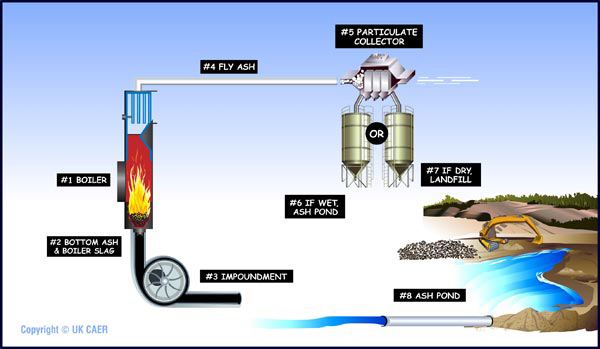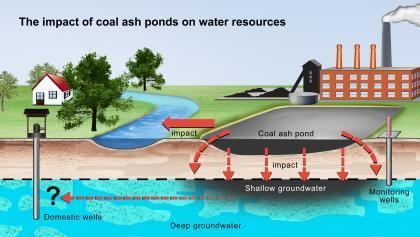 | ||
The largest coal ash pond in the us coal ash part 2
An ash pond is an engineered structure for the disposal of bottom ash and fly ash. The wet disposal of ash into ash ponds is the most common ash disposal method, but other methods include dry disposal in landfills. Dry-handled ash is often recycled into useful building materials. Wet disposal has been preferred due to economic reasons, but increasing environmental concerns regarding leachate from ponds has decreased the popularity of wet disposal. The wet method consists of constructing a large "pond" and filling it with fly ash slurry, allowing the water to drain and evaporate from the fly ash over time. Ash ponds are generally formed using a ring embankment to enclose the disposal site. The embankments are designed using similar design parameters as embankment dams, including zoned construction with clay cores. The design process is primarily focused on handling seepage and ensuring slope stability.

Leachate from fly ash can contain heavy metals in excess of allowable RCRA standard. The flow of water through the fly ash and into ground water is controlled by using low-permeability clay layers and cutoff trenches/walls. Low-permeability clays have permeability on the order of 10−7 cm/s. Vertical flows through the foundation are controlled by siting fly ash ponds on areas of thick clay or rock layers that provide suitably low permeability through the base of the pond. Areas with high sub-surface permeability can be improved by importing suitable clay. Horizontal flows through the embankment are controlled using clay zones within the embankment. Cut off trenches and cut off walls are used to connect the embankment clay zones and the foundation clay layers. Cut off trenches are trenches that are dug into the selected low-permeability sub-surface layer and backfilled with clay to key the embankment clay zone into the sub-surface. Cut off trenches are generally used when the low permeability foundation layer(s) are near surface. Cut off walls are similar to cut off trenches, but are generally much deeper and narrower, and use either slurry or grout instead of clay.
Due to few federal and state regulations concerning ash ponds, most do not use geomembranes, leachate collection systems, or other flow controls often found in municipal solid waste landfills. Following a failure that caused the Tennessee Valley Authority’s Kingston Fossil Plant coal fly ash slurry spill, the Environmental Protection Agency began overseeing the regulation of all ash ponds in order to establish national fly ash pond standards.


